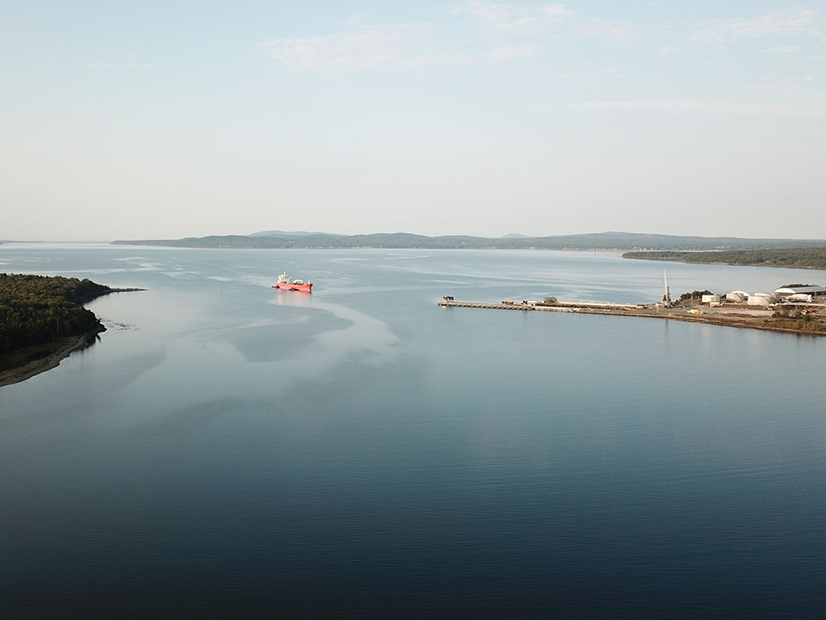
An uninhabited island on Maine’s central coast is the preferred site for a port to support the offshore wind farms state leaders hope will be built nearby.
Sears Island had emerged as the likely choice during a lengthy deliberation that included Eastport and Portland.
Gov. Janet Mills (D) announced Feb. 20 that it had in fact been chosen.
Consideration of Sears Island had been controversial all along, as it is a wooded nature preserve. After the decision was announced, island advocates confirmed the fight against development is far from over.
This has become a familiar role for them. Over the past few decades, they have fought proposals including a nuclear reactor, LNG terminal, coal-burning power plant and oil refinery. None ever reached construction.
The nearby region is not heavily industrialized, nor is it virgin wilderness. Tankers dock at a mainland oil terminal just a few hundred yards from northwest Sears Island.
And as Mills noted in her announcement, 330 acres of the 941-acre state-owned island are reserved for port development. Approximately 100 acres of that would be needed for fabrication, staging, assembly, maintenance and installation.
Nearby Mack Point, on the mainland, was evaluated along with Sears Island in a process that stretched more than two years. But Mack Point would have required dredging, adding to the cost of a project already expected to run in the $500 million range.
There are many more steps before the state can break ground on an offshore wind port, including independent state and federal reviews of the permit applications the Maine Department of Transportation plans to submit this year.
In consideration of the state’s large fishing industry, Mills in 2021 signed legislation banning new offshore wind construction in state waters. This puts the 3 GW of offshore energy generation capacity state leaders envision in federal waters too deep for fixed-bottom turbines. (See BOEM Designates Draft Wind Energy Area in Gulf of Maine.)
Floating turbines still are in research and development, including in Maine, where the state university has an ambitious program the state hopes to parlay into a lucrative new sector for its economy.
A good deepwater port would be a key part of Maine assuming a national or regional leadership status in floating wind.
Friends of Sears Island indicates it is not opposed to the drive for offshore wind or for a port. But Mack Point seems like a better site to them.
In a Facebook post Feb. 20 after Mills’ announcement, the organization said: “We are disappointed beyond words, of course, but there are many steps necessary before the port is built. The federal, state and local permitting process is onerous, and multiple challenges can be anticipated.”
Others applauded Mills’ decision, including labor and environmental groups eager for the anticipated economic and environmental benefits of offshore wind development.
Maine completed its Offshore Wind Roadmap a year ago. (See Maine Finalizes Offshore Wind Roadmap.) The state currently is awaiting federal approval to lease a site in the Gulf of Maine where it can tether 10 to 12 floating turbines as a test project.
State leaders hope placing the nation’s first floating research array off Maine’s coast will further boost the small state’s profile as the floating wind expands in the United States.

